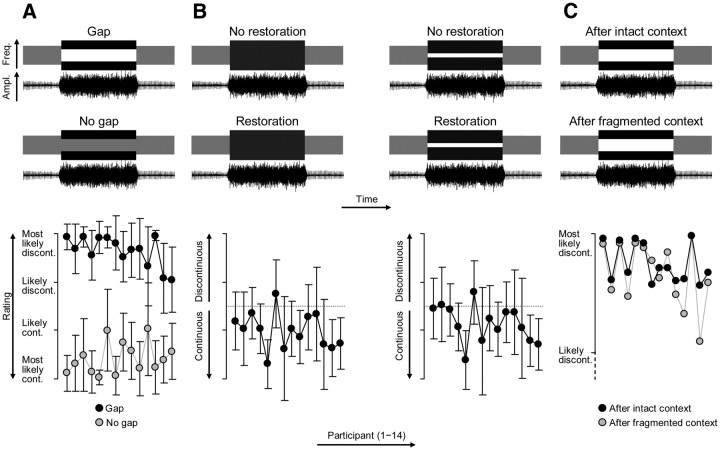Figure 4.
Experimental conditions and behavioral results. A, Top, Schematic stimulus spectrograms and stimulus waveforms; truncated for visibility. Neural on/off responses to the missing vowel portion were identified by comparing a clearly interrupted vowel (Gap condition) and a clearly uninterrupted vowel (No-gap condition). Bottom, Individual continuity ratings (mean ± SD across trials). All participants perceived the vowel as strongly discontinuous or continuous in these conditions. B, Neural suppression related to the restoration of the vowel was investigated using two pairs of physically matched stimulus conditions. For each pair, participants had rated the interrupted vowel as either discontinuous (No-restoration condition) or continuous (Restoration condition) through noise. The perceptual ambiguity of these conditions is illustrated by both the length of the error bars (intertrial variability) and the overlap of these bars with the midpoint of the rating scale (dotted line). C, Context-specific adaptation was investigated by comparing the clearly interrupted vowel (same as in Gap condition, see A) across conditions in which the preceding auditory context was either intact or fragmented (Fig. 8). Participants' ratings were typically correct (i.e., strongly discontinuous), but following fragmented context, these ratings were significantly less decisive (i.e., less likely discontinuous, see ratings; error bars omitted for visibility).

